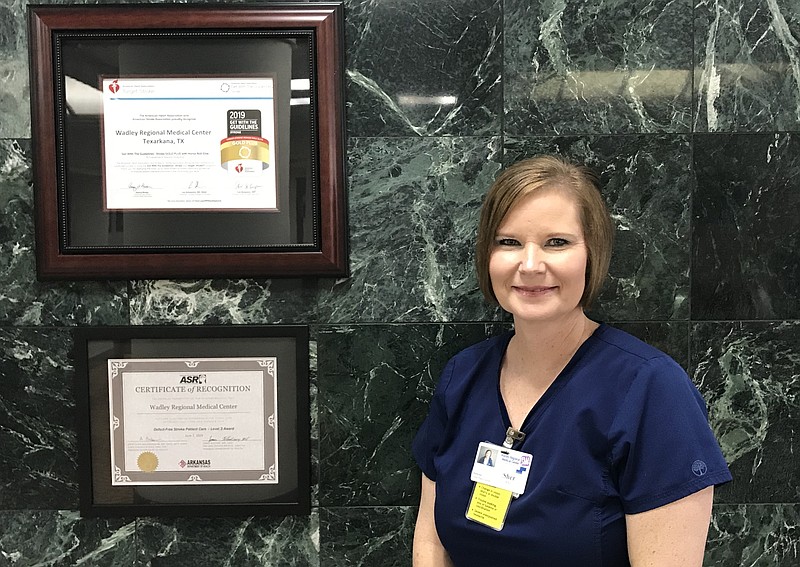February is American Heart Month, a great time to raise awareness of heart disease - the leading cause of death for women. It affects more than 6 million women in the U.S. and another 37 million are at risk of developing it, according to Womenheart.org.
Sher Fomby, nurse practitioner and cardiovascular program director for Wadley Regional Medical Center, is on a mission to educate the community about cardiovascular disease. Fomby provides oversight for the coordination of care for stroke and chest pain patients at Wadley.
"When it comes to prevention we focus on what risk factors a patient has that they can change or treat such as smoking, high blood pressure, poor diet, sedentary lifestyle, obesity, excessive alcohol use and diabetes," Sher said.
"Controlling risk factors is key for prevention of heart disease. Approximately 80 percent of cardiac events can be prevented through people controlling their risk factors."
Symptoms of a heart attack include:
chest pain
pressure
squeezing
burning
arm pain
neck pain
back pain
jaw pain
sweating
nausea/vomiting
shortness of breath
anxiety
feeling of fullness
excessive fatigue
passing out or feeling faint.
Sher said it's important to note women experience certain symptoms that are different from what men usually experience.
"Everybody can have the same type of symptoms but women more frequently have right-sided chest or arm pain and extreme fatigue," she said.
Other symptoms women are more prone to have include:
abdominal pain
increasing shortness of breath
nausea/vomiting
upper back pain that travels to the jaw
feeling like they have the flu.
People need to know what steps to take if they have symptoms of a heart attack.
"We really recommend calling 911," Sher said. "When a patient is brought in by EMS, their care starts in the field and EMS notifies us so our team can be on stand-by. Frequently we have enough notice by EMS that we have our physician, our cath team or stroke team ready to go when they get here.
"When you're talking about a heart attack, time equals muscle and with a stroke time equals brain. The more efficient the health care team is at getting that initial work-up completed, the faster the time to treatment for those patients which directly affects their outcome. It's still a fast process if a patient comes in off the street."
Treatment for a heart attack often includes cardiac catheterization.
"When the coronary artery is completely blocked, those patients need to be taken emergently for a heart cath to get the blockage opened up," Sher said. "When muscle dies those patients are at risk for long-term problems or even death."
Sher started her nursing career in 1995. Over the course of her career she's held several different positions, but she started as the stroke-care coordinator at Wadley in 2009. A few years later she became the cardiovascular program director, which covers both strokes and heart attacks.
"I have a love for cardiac care," she said. "The reason I like is so much is I'm able to follow patients through the continuum of care - from the emergency room, to the ICU, to their release, and I get to see the impact of the work we do everyday."
In her position Sher sees a lot of patients with cardiovascular problems. One thing she's noticed is these life-changing incidents are occurring in younger and younger people.
"Strokes and heart attacks do not discriminate against age," she said. "Anyone is vulnerable, especially if the person has risk factors. We have treated people as young as 22 with tPa. Most people think 'It's not going to happen to me. I'm too young.' But the truth is we're seeing stroke and heart attack in younger and younger people."

